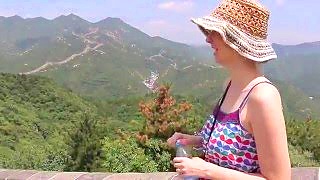With Moody Wanderer ...
[video v=Hif8VuGx_Cs]Videos about Forbidden City, China
A guide to the magnificent Forbidden City (Palace Museum) in BeiJing
With Lulu's Daily In China ...
[video v=782AU6JQq-I]Welcome to the Forbidden City
Explore the imperial palace and ancient architecture of the Forbidden City in Beijing.
Introduction
The Forbidden City, also known as the Palace Museum, is a vast imperial palace complex in Beijing, China. It served as the home of emperors and their households, as well as the ceremonial and political center of the Chinese government for almost 500 years.
Location
The Forbidden City is located in the Dongcheng District in the heart of Beijing, directly north of Tiananmen Square.
History
The construction of the Forbidden City began in 1406 and was completed in 1420. It was the Chinese imperial palace from the Ming dynasty to the end of the Qing dynasty, housing 24 emperors. The complex covers 72 hectares (178 acres) and consists of 980 surviving buildings with 8,886 rooms.
In 1925, the Forbidden City was transformed into the Palace Museum, showcasing extensive collections of artwork and artifacts from the imperial collections of the Ming and Qing dynasties. It was designated a UNESCO World Heritage Site in 1987.
Attractions
- Meridian Gate (Wu Men): The main entrance to the Forbidden City, known for its grand architecture and historical significance.
- Hall of Supreme Harmony (Taihe Dian): The largest hall in the Forbidden City, used for major ceremonial occasions.
- Hall of Central Harmony (Zhonghe Dian): A smaller, intimate hall where the emperor prepared and rested before ceremonies.
- Hall of Preserving Harmony (Baohe Dian): Used for banquets and later for imperial examinations.
- Palace of Heavenly Purity (Qianqing Gong): The emperor's residence, representing his supreme authority.
- Hall of Union (Jiaotai Dian): A hall connecting the emperor's and empress's palaces, symbolizing their union.
- Palace of Earthly Tranquility (Kunning Gong): The residence of the empress and the site for imperial weddings.
- Imperial Garden: A serene garden area with ancient trees, rockeries, and pavilions, used by the imperial family for leisure.
- Clock and Watch Gallery: Displays a vast collection of timepieces from the imperial collection.
- Treasure Gallery: Houses valuable artifacts, including jade, gold, and other treasures from the imperial era.
Activities
- Exploring historical buildings and courtyards
- Visiting museum exhibitions
- Photography
- Participating in guided tours
- Attending cultural performances and events
Facilities
- Visitor Center
- Restrooms
- Gift Shops
- Cafes and Restaurants
- Parking Lots
- Audio Guide Rentals
- Guided Tour Services
Visitor Tips
- Wear comfortable walking shoes.
- Bring water and snacks, especially if you plan to stay for several hours.
- Visit early in the morning or late in the afternoon to avoid crowds.
- Check the weather forecast and dress appropriately.
- Respect the cultural and historical significance of the site; behave appropriately and follow all rules and guidelines.
- Plan your visit to include the main attractions and leave time for exploring lesser-known areas.
FunFancie in BeiJing – incl. the Great Wall and Forbidden City
Beautiful BeiJing in the snow
Including the Forbidden City, the Great Wall of China and JingShan Park.
With Seiu Travel ...
[video v=WnuHbyNExL4]The Forbidden City 紫禁城 in Ultra HD / 4K
See the architectural marvel that is the Palace Museum in the heart of the blue sky city of BeiJing ...
[video v=R9vcSWb6mug]Walk East in BeiJing – the Forbidden City, Summer Palace, Temple of Heaven
Snow fall at the Forbidden City, BeiJing
Bonus film - ZhongShan Park ...
Plus more videos ...
Beijing 北京 trip – places, food, fashion and more …
Mostly food ; )
The Forbidden City (Palace Museum) and more in this China travel and culture vlog.
A masterclass of video editing and use of music. A vlog that is 'show, don't tell'.
A trip around the sights and tastes of BeiJing, China.
With Dear Nessie (and Hannah) ...
[video v=VVTbcEYz2D8]Bonus film look-book ...
Plus more videos ...
A day in BeiJing 北京
Including the Forbidden City (Palace Museum), BeiHai Park, the Temple of Heaven (TianTan) and the Summer Palace (YiHeYuan) ...
[video v=2Mf9oXqxJ4s start=1:04]The Forbidden City 故宫 (Palace Museum), in Ultra HD / 4k
This beautiful Ming dynasty complex (GuGong, 'Old Palace'), which opened in 1420, lies in the heart of Beijing ...
[video v=5yCWpzYsrms]Bonus films - mostly Beijing, plus a little ShangHai ...
Plus more videos ...
A liitle jet-lagged, our travelers spend a day in Beijing before setting off for other parts of China. Places visited : Tian'AnMen Square, the Forbidden City (Palace Museum) plus JingShan and BeiHai parks, all within easy walking distance of each other. Then it is on to DeShengMen to take the bus to BaDaLing Great Wall of China (one can also take a train from Beijing North railway station, near XiZhiMen). Welcome to the blue sky city ...
Forbidden City 紫禁城 photo shoot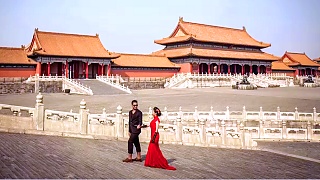
Beautiful pre-wedding pictures at the Palace Museum in BeiJing ...
Beautiful Beijing 北京 - the main attractions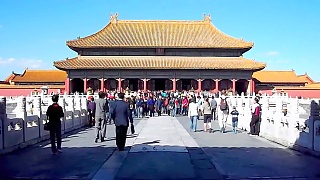
The Forbidden City (Palace Museum), the Temple of Heaven, the Summer Palace, the Great Wall (at Badaling), Beihai Park, the Botanical Garden, JingShan Park, the Olympic Park, Qianmen Welcome to the blue-sky city ...
A morning musical workout at the entrance to the Forbidden City in Beijing ...
A walk around the Forbidden City 紫禁城
The Palace Museum in Beijing 入宮門深似海。北京故宮.
Jean-Michele Jarre at the Forbidden City, BeiJing - video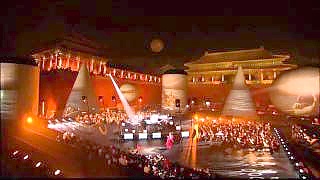
A flashback to October 2004 ...
A walk through the beautiful Forbidden City 紫禁城, BeiJing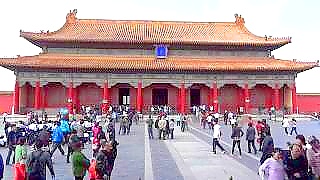
The nearly one million square meter Palace Museum lies at the heart of Beijing ...
A tour of the Forbidden City 紫禁城 (Palace Museum)
In central Beijing ...
A visit to the Forbidden City 紫禁城 in BeiJing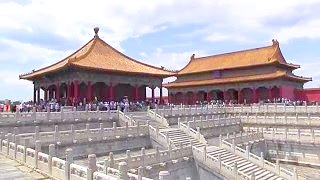
And JingShan Park. Filmed in early summer, 2012.
The Forbidden City 紫禁城 in BeiJing (slideshow) - video
A film of the Palace Museum by kinabaloo.com ...
The beautiful Forbidden City 紫禁城 in BeiJing
The Palace Museum ...
A look around the Forbidden City 紫禁城 in BeiJing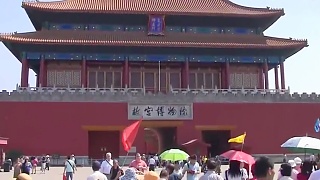
Filmed in July 2011 Video by Orien Travel http://www.orientravel.pl
The Great Wall at MuTianYu 慕田峪, BeiJing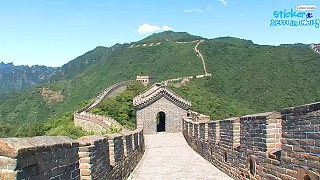
With Sticker Travel. After trekking the Great Wall, the team chill out at Chun Hui Yuan Spa Resort, then head back downtown to view the Forbidden City at sunset from the hilltop in JingShan Park ...
Filmed in July 2011.
Including TianAnMen Square, BeiHai Park, WangFuJing and the Forbidden City.
A trip to JingShan Park 景山公园 and the Forbidden City 紫禁城, BeiJing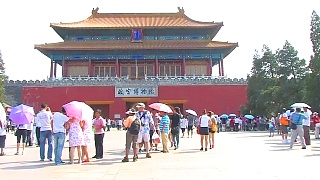
JingShan Park lies immediately north of the Forbidden City (Palace Museum).
The first courtyard of the Forbidden City 紫禁城
Filmed in the summer of 2010.
Forbidden City 紫禁城 scenes, BeiJing - video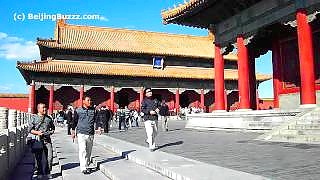
Views of the Palace Museum ...
The Forbidden City 紫禁城 in BeiJing
A documentary by CCTV. A UNESCO World Heritage Site.
The Forbidden City 紫禁城 (Palace Museum), BeiJing - video
The Forbidden City,at the center of the ancient city of Beijing, was home to 24 emperors during the Ming and Qing dynasties. Today, the Forbidden City is a public museum and World Heritage site, attracting millions of tourists from around the world. In the early 1400s, the third Ming Emperor, YongLe, moved the capital of China to Beijing. In 1406, he began construction of a new 'Forbidden City' that would include the imperial palace complex. It took 14 years to complete - and an estimated one million workers, and 100,000 artisans, were involved in some way. Now officially renamed as the 'Palace Museum' ('GuGong' in Chinese, meaning simply 'Old Palace'), the extensive grounds of the Forbidden City cover 720,000 square meters (74 Hectares). There are 800 buildings that have in total about 9,000 rooms. Indeed, the Forbidden City is listed by UNESCO as the largest collection of preserved ancient wooden structures in the world, and was declared a World Heritage Site in 1987. The Forbidden City is located directly to the north of Tian'AnMen Square and is accessible from the square via Tian'AnMen Gate. The Palace Museum is now a fantastic place to wander and dream of times gone by. White marble, walls of terra-cotta, roofs of glazed golden tiles, and woodwork finished with vermillion paint, lacquer and gilding unite to create an effect of outstanding beauty. Nearest subway stations: Tian'AnMen Xi or Tian'AnMen Dong (line 1).
The Forbidden City 紫禁城, BeiJing ~ seven scenes - video
Filmed in October 2010.
Outside the Forbidden City, BeiJing 北京
TianAnMen, Meridian Gate (WuMen) and the Palace Moat.
The Palace Museum (Forbidden City), Beijing - video
An introductory video by the Palace Museum. Established in 1925, the Palace Museum encompasses the former imperial palace of two consecutive dynasties - the Ming (1368-1644) and the Qing (1644-1911). The magnificent architecture, and the vast collections of paintings, calligraphy, ceramics and decorative objects make it one of the most prestigious museums in the world. In 1961 the imperial palace was designated by the State Council as one of China's foremost-protected cultural heritage places, and in 1987 it was made a UNESCO World Heritage site.
Places include the Forbidden City and BeiHai Park.
Places featured include the Summer Palace, Great Wall, Forbidden City and the Olympic park.
A trip to the Forbidden City and Summer Palace in Beijing - video
Filmed in summer 2009.
Scenes from BeiJing, Hong Kong and ShangHai - video
Places featured include the Forbidden City in Beijing and the Ten Thousand Buddha Temple in Hong Kong.
Filmed in June 2010.
The Forbidden City, the Hutongs and the Summer Palace ...
An introduction to the Forbidden City, Beijing - video
Formally known now as the Palace Museum. Established in 1925, the Palace Museum comprises the primary imperial palace of two consecutive dynasties - the Ming (1368-1644) and the Qing (1644-1911). The magnificent architecture, and the vast collections of imperial paintings, calligraphy, ceramics and decorative objects, make it one of the most prestigious museums in China - and, indeed, the world. In 1961 the imperial palace was designated by the State Council as one of China's foremost cultural heritage sites, and in 1987 it was made a UNESCO World Heritage Site.
A visit to the Forbidden City 紫禁城, BeiJing - video
Filmed in summer 2009.
The Forbidden City in the snow - video
A short clip from winter 2010 ...
Scenes from around the Forbidden City, BeiJing 北京
Filmed at the end of November 2009.
The virtual Forbidden City, BeiJing 北京
The Palace Museum, in association with IBM, have created a virtual replica of China's Forbidden City, including its former palace grounds. "The Forbidden City: Beyond Space & Time" is a 3D re-creation that enables users to see what the walled fortress looked like during the Ming and Qing dynasties. Website (includes software download link) http://www.beyondspaceandtime.org
Historical treasures in the Forbidden City, BeiJing 北京
A quick look at just a few of the many exhibits ...
A trip to the Forbidden City, BeiJing 北京
Nice slideshow ...
A trip to TianAnMen Square and the Forbidden City, BeiJing 北京
Filmed in early July 2009.
BeiJing 北京 at night and the Forbidden City next day
One person's first 24 hours in Beijing ...
See the Forbidden City, Summer Palace, Temple of Heaven and TianAnMen Square under snow ...
ChangPuHe Park, just east of the Forbidden City and Tian'AnMen Square is separated from the busy street by a high wall. This film nicely juxtaposes the relaxing scenes in the park with the rush hour of city life just next door ...
Three highlights of central BeiJing 北京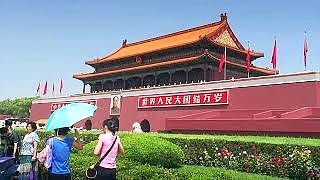
Includes TianAnMen Square, the Forbidden City (Palace Museum) and the Temple of Heaven. Video by LimeWave.com, which has photos and videos for a number of places around the world.
A walk around the Forbidden City 紫禁城 - video
Filmed during the National Day holiday week, October 2009.
Including the Great Wall at SiMaTai, the Summer Palace, the Forbidden City and more ...
